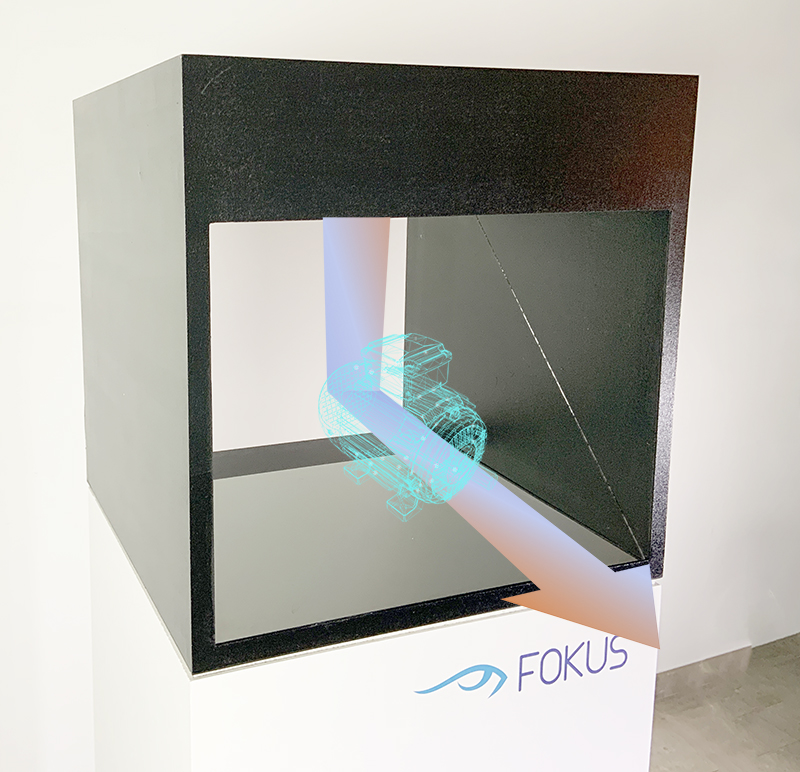NEWS – How holographic projections work
How holographic projections work
Holograms such as the ones most of us know from movies like Star Wars are (unfortunately) technically not yet possible these days. Realistic holograms like these will eventually come, some day in the future. However, there are several ways to create holographic effects that trick the brain and create the illusions of an image created “in the air”. Below we describe the 3 methods possible to do this today.
Light projection using Pepper’s Ghost principle

At the basis of the principle is a special type of glass which is micro-coated to allow light being reflected and light being transmitted through the glass. The ratio between transmission (T) and reflection (R) is typically 60/40 or 50/50. A special high-brightness screen -invisible to the viewer- projects a flipped image on the glass surface. The viewer which stands in front of the hologram can see through the glass but at the same time can capture the image projected. This creates the illusion that an object is floating in the air. This type of holograms also allows mixed-reality projections whereby an object is placed in the holographic projection box such that a holographic effect can be projected round the real object (see here an example of mixed-reality holograms made by Fokus Visuals). The Pepper’s Ghost principle orginates from theater plays in the 19th century and allowed to create the first visual effects on a stage in real life. Read more about the original Pepper’s Ghost here.
At Fokus Visuals we use this type of holographic projection because it combines several advantages:
✓ The light based principle can be build on several sizes and thus fits various purposes
✓ Low noise and rigid
✓ Allows to include objects and create mixed-reality holographic illusions
Ventilator LED hologram

This type of holographic effect is typically mounted on a stand and uses a fan (typically 2 or 4 blades) with dense LEDs mounted. The fan knows at every point in time the exact position of every LED and steers the RGD (Red-Green-Blue) value of every individual LED based on its position. The ventilator turns at high speed, which is invisible to the human eye. The fan itself becomes “invisible” and transparant and only the LED visualisation remains. Different fans or ventilators can be combined to create larger holographic effects. The ventilator LED has several pros/cons:
✓ Cheapest way of creating a holographic effect
✗ Makes a lot of noise and can be dangerous when near humans (ventilator can harm seriously)
✗ The closer the ventilator is approached the flatter the image becomes
✗ Thin lines (circles) are visible due to LED pitch
Holographic foil for large stage projections

This type of holograms is used for large events such as music concerts (examples include the shows of Tupac or Abba). A thin foil is stretched before the stage and a powerful series of projectors reflects the image of (often artists) on the foil sheet. This creates the effect that the artist is really on the stage, but in reality it is a 3D image which is pre-recorded. It is possible to place other people behind the foil sheet to create a mixed-reality illusion and enhance the effect.
✓ Revolution in the event scene, making it possible to create stunning visuals
✗ Expensive to setup, and time consuming to create the visuals
✗ A very tight control of audience positioning and stage lightning is required not to break the illusion